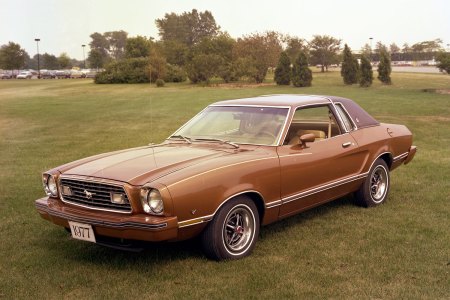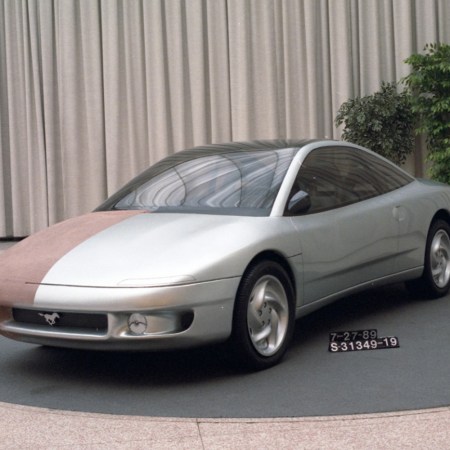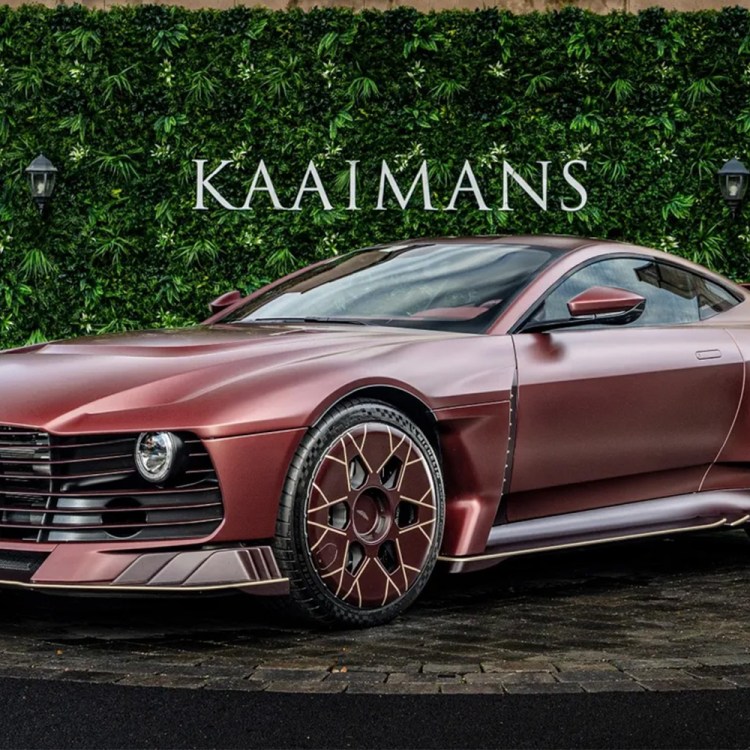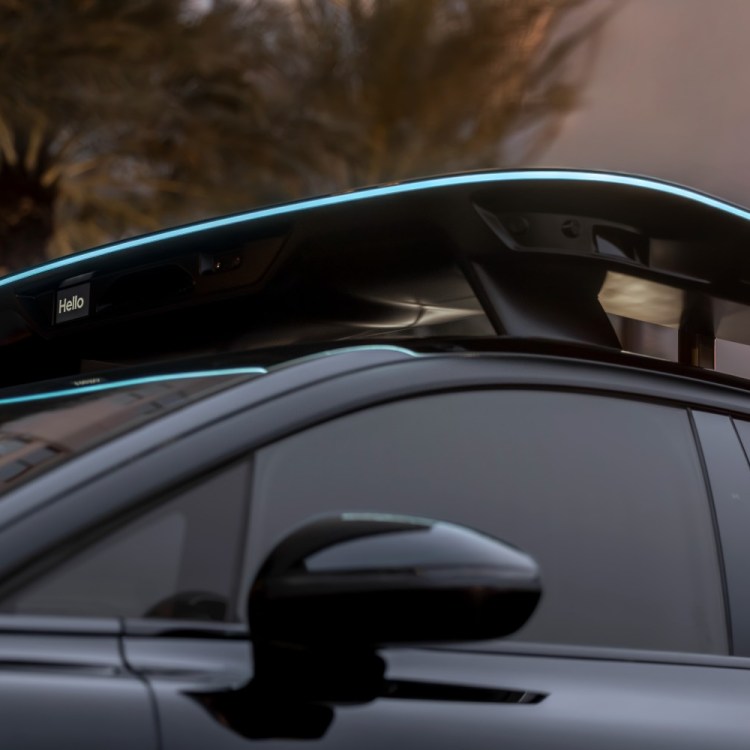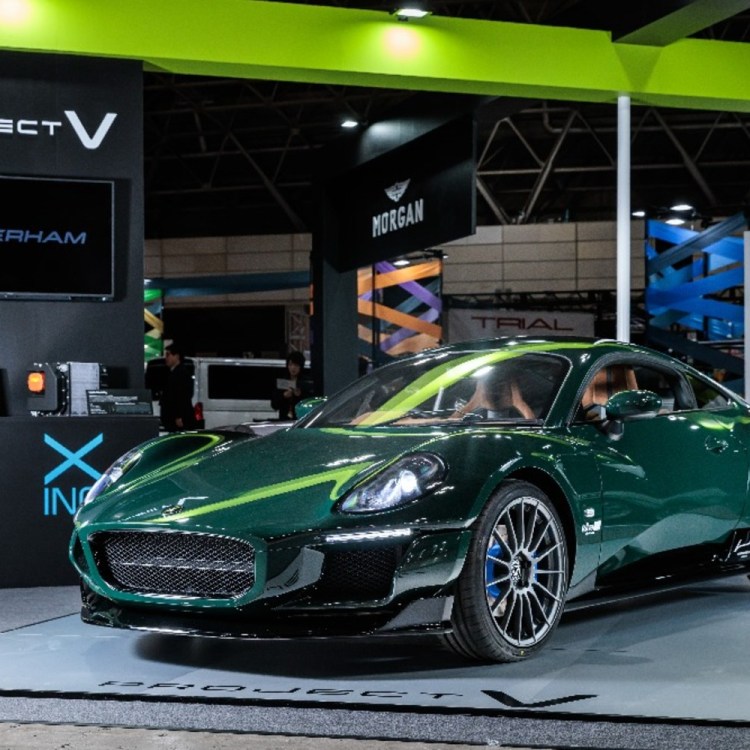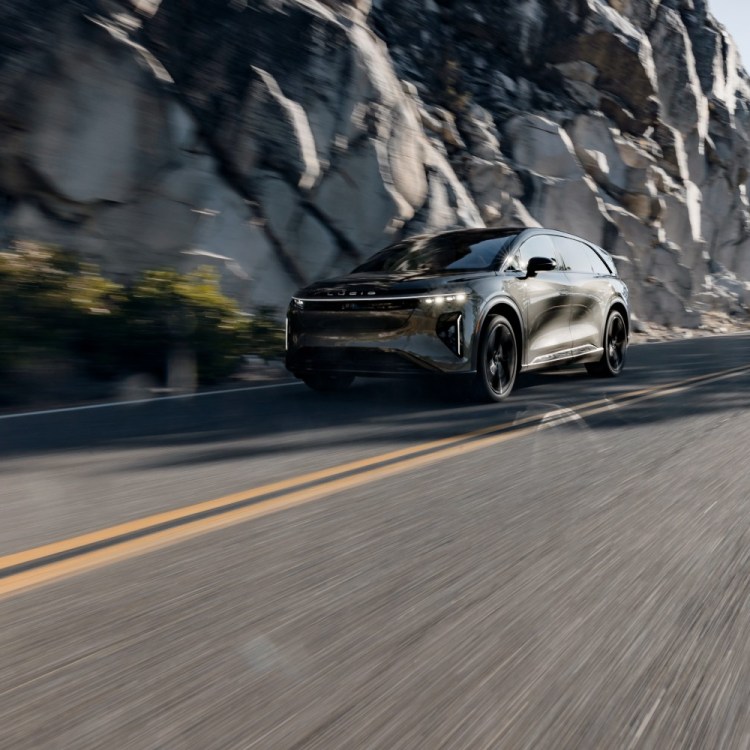April marks the 60th anniversary of the Ford Mustang, which has been in production since 1964. To recognize the occasion, InsideHook is running stories all month long celebrating, dissecting and probing the legacy of the world’s first pony car. Here’s to another 60 years.
Getting my driver’s license on my 16th birthday was, up until that point, the biggest day of my life. Like so many of my pre-social-media generation, cars were the gateway to ultimate personal freedom. Add in the fact that I was already automobile obsessed (see: supercar posters and piles of bedside buff mags), and my world all but revolved around four wheels.
While the vast majority of my peers had sensible parents who did things like research horsepower and safety features for their first cars, mine were a bit more…happy go lucky. As such, they didn’t see an issue when I asked for what was essentially my dream car: a V8-powered Ford Mustang GT Convertible. This being the Vanilla Ice “Rollin in My 5.0” era, so-called Fox-body Mustangs marked a distinct muscle car milestone.
I was deep into the enthusiast rabbit hole and all about everything the top-dog GT model represented: its then-potent 5.0-liter V8 (4.94 liters, if you were really keeping score) producing 225 all-American horsepower; the fact that it came with an available five-speed manual gearbox; and its extra bodywork accentuating fat Goodyear Gatorback tires. The ‘Stang, as I would later learn in an unplanned excursion off a twisty road, also put the onus on the driver thanks to the absence of safety features like traction control and anti-lock brakes. While many of my fellow 16-year-old classmates were sporting four-cylinder Acura Integras or VW Rabbits, my Mustang was an exclamation mark of tire-spinning torque and burbling exhaust howls.
Confessions of a Four-Time Ford Mustang Owner
“I’ve owned more Ford Mustangs than most, not as many as some.”Years after I traded my Mustang for a string of more mild-mannered cars — a Miata, a classic Benz, a well-mannered 3-series BMW cabriolet — I came back to the brand for a review of their latest and greatest. You’d think the Mustang would have evolved quite a bit in the intervening years, and it certainly did from a performance perspective, gaining horsepower and handling prowess thanks to innovations like [gasp] an independent rear suspension, but something about the new model still felt just like I hoped it would — that is, like a Mustang.
What was it about settling into the driver’s seat that felt instantly familiar? Let’s step back six decades for insights into Ford’s longstanding sports car of record, and how it’s managed to carry the Mustang soul into 2024.

Pony Car DNA
The Ford Mustang debuted at the World Fair’s in New York City on April 17, 1964. While the model’s initial success is well-documented, setting a record in its first year with a sensational 418,000 units sold, what’s more telling is the intent and positioning behind the model. On April 13 at the press introduction ahead of the public unveiling, Ford president Lee Iacocca talked more about the buyer profile than he did about the new model’s styling.
“His speech was literally a demographic breakdown of the Baby Boomer generation,” says Ford Archives and Heritage Brand Manager Ted Ryan, adding that Iacocca pointed to the exponential growth of two-car families and the market potential for a relatively affordable fun car.
As such, the Mustang was introduced with a $2,368 starting price, or a mere $20,000 adjusted for inflation. Ryan emphasizes that individuality was a key USP, with Boomers already embracing their own music (Beatles and Rolling Stones), fashion (bell-bottoms and long hair), et al. “Fascinatingly,” he adds, “it’s been able to reinvent itself a half a dozen times, so that at any given point in time it’s appealing to its demographic — whether you’re talking about the much-maligned Mustang II (which was a perfect car for the oil crisis and skyrocketing gas prices), or the Fox body, which is enjoying its own renaissance now.”

Muscle Car Alchemy
Back to the driver’s seat: What was it about that weird sense memory that recalled my very first Mustang all those years later? Sure, modern Mustangs deliberately incorporate retro style touches like three-bar taillamps and a digital instrument panel that can be configured to an “analog” version that mimics the old-school gauges on my ‘80s-o-riffic ragtop. For insight, I spoke to Ford Mustang Brand Manager Joseph Bellino. “What keeps the Mustang true to its DNA are things like the long hood, the short decklid, the manual transmission, rear-wheel drive and the V8 we’ve always kept there…and just the excitement that car brings when you turn it on.”
Okay, that last one was a pure sales pitch. Yes, my original Mustang was an exciting car to drive, which encapsulates my motivation to own it in a nutshell. But while the powertrain was remarkably stout despite my admittedly abusive driving habits, the 1980s-era body and interior didn’t hold up quite so well, sagging and falling apart a bit before I finally parted ways with the steed.

Future-Proof?
Fast forward to the modern day, and yes, Ford build-quality has improved quite a bit. There’s also another so-called Mustang in the family in the form of the Mach-E, a fully electrified model that applies the longstanding name to a crossover platform and, not incidentally, can accelerate to 60 mph more quickly than its internal combustion-powered namesake.
Nameplate engineering aside, there’s also quite a bit of modernization that’s been applied to the OG pony car beyond the obvious bits like a sprawling 13.2-inch touchscreen, primarily focused on performance through the model’s Track Apps function. One feature of note is Drift Brake, which applies the handbrake lever to the rear stoppers only in order to enable sideways slides. Another is Line Lock, which enables lurid smoky burnouts by locking up the front brakes, while Remote Rev enables — you guessed it — the engine to be revved from afar while the car is parked.
Maybe these so-called innovations are more childish than they are future-forward. But is that a bad thing? Driving a modern Mustang reminded me of the things that imprinted on my interests as a teenager: an inspiring engine, a clutch pedal, and the option to drop the top and take in my surroundings in a way no other conveyance could. With all that is changing in the automotive industry, and Ford’s notable abandonment of sedans and coupes in favor of SUVs and crossovers, the Mustang stands alone as an exception to the rule of change.
Yes, the modern four-cylinder produces nearly 100 more horsepower than my big bad V8 did back in the day, but Ford still builds an even burlier supercharged V8 now that makes it an outlier among the sea of downsized sports cars. The best part? Ford chair Bill Ford and CEO Jim Farley both insist the carmaker will continue to offer a V8 as long as it possibly can, making nostalgia all but future-proof.
This article appeared in an InsideHook newsletter. Sign up for free to get more on travel, wellness, style, drinking, and culture.

